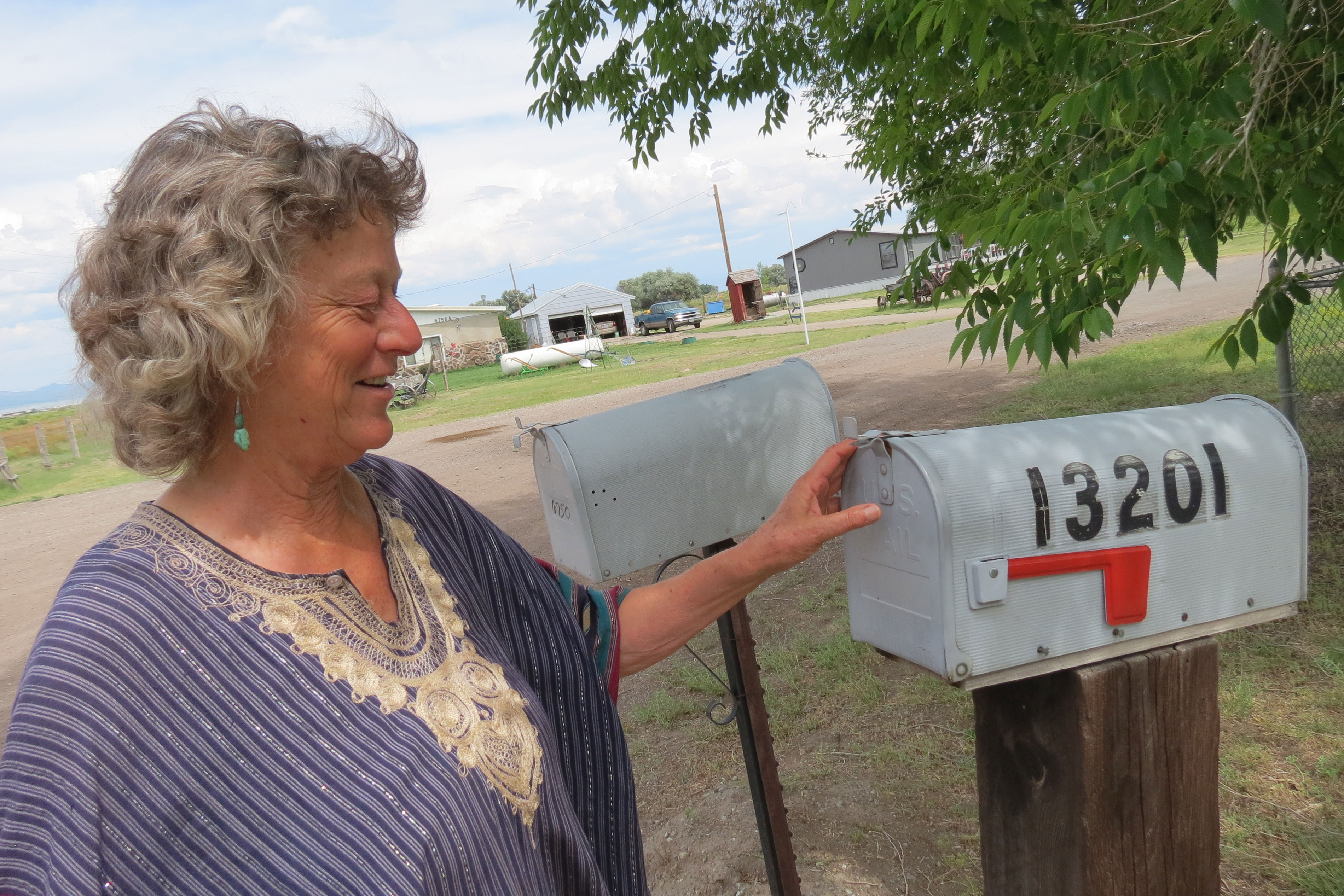

When Kathy Park Woolbert reaches into her mailbox at her home on the outskirts of Alamosa, Colorado, it’s not just the usual bills and fliers. She finds carefully crafted, sometimes exquisitely hand-written prose – from prisoners.
“One, two, three, four, five, six, seven, eight,” Park Woolbert counts out today’s stack of large manila envelopes.
The envelopes are addressed from all over. A penitentiary in Fort Leavenworth, Kansas. Nevada’s Ely State Prison. The correctional facility 330 miles upstate of Alamosa in Sterling. Inside are pages of essays, poems, prison memoirs or argumentative research papers.
Some prisoners write meticulously by hand using prison-issued inch-long pencils, others are type-written.
Park Woolbert is an instructor at Adams State University in Alamosa, home to one of the nation’s top ranked prison correspondence programs. Only a handful of universities offer prison-based correspondence programs. Adams State offers one of the most diverse range of courses and degree programs, including a Master of Business Administration. It also allows the longest time to complete the coursework and is the least expensive.
Many colleges, in fact, have dropped print-based correspondence courses “because it’s so 20th century, probably,” Park Woolbert laughs.
Because so many prisoners can’t access computers, the snail-mail correspondence she’s sorting through is the only way they can get an education. One major study showed that prisoners who take part in educational programs are 43 percent less likely to reoffend.

Park Woolbert picks up a research paper on whether to end the rhinoceros trade and painstakingly goes over the copy. For research papers, prisoners sometimes can refer to a textbook but may also interview prison guards or other prisoners, or get family members to bring in research.
She marks up the paper with positive comments, critiques or suggestions like “vague” “be specific” or “what’s your source” and asks for revisions. Then it goes back into an envelope and back into the mail. If prisoners don’t have money for a self-addressed stamped envelope, Park Woolbert takes care of it.
The process of shaping and rewriting can be a slow and painstaking one, but prisoners have lots of time.
“They can revise and get feedback as much as they want,” laughs fellow instructor Carol Guerrero-Murphy. She believes it leads to something bigger.
“For students in the program, writing is an open door through which they find self-discovery, imagination, and healing.”

One prisoner used a cover letter to explain an essay where he tried to capture the brutality of prison while documenting his growth and maturation behind bars. He writes:
“It’s hard to explain to another person the idea that I’ve learned to speak French in the same cell where two separate murders have taken place. It’s a cold and hostile environment, but I’ve also experienced some profound joys and experiences here. The dimmest lights shine brightest in the darkest places. And I’ve learned to appreciate those dim lights as inspiration. The fact that I’m almost certainly going to die here is something that’s hard to escape even for a second.”
Looking at her stack of mail, Kathy Park Woolbert says “there is real talent” in the author.
“What they put into [it] is so off the charts compared to your regular run of the mill student – it really is,” she says of the good ones.
Many of the instructors’ students grew up in troubled, impoverished homes around drugs or gangs. Mental health problems are also prevalent. Some students have spent dozens of years in solitary confinement or are in prison for life. In a prison memoir titled “Time Mines,” the author writes about the nature of time inside prison.
Incarcerated since he was a teenager, the author was 54 at the time of writing:
“With an explosion of emotion, tears welled up in my eyes and I sobbed, as I realized that time had stolen the world. It was gone and all I had left was a Polaroid backdrop of 39 pines and the silent certitude of ticking time. Prison, for someone serving a life sentence is very like being dead. You become a ghost in your own life, denizen of a kind of purgatory. You become an airplane that will never land, perpetually soaring over fly-over country with no connections below and you cannot remember where you are going or where you are from. Time has stolen these most crucial waypoints of your life and you have become eternal.”
Another prisoner writes about how “unfree” he was outside of prison – bound by social pressures and rigid codes of behavior. For the first time in his life, prison brought a sense of freedom. Kathy Park Woolbert says this freedom allows some students to start to come to terms with the crimes they’ve committed.
“Some of the students are writing really bluntly honestly about their own shock that they were in such a bad state that killing the next three people that they encountered was no big deal,” she says. “Now they have perspective that – oh my god – that I was in that deep of a hell to be able to do that and not even have it register. So for them it’s something that needs to be exorcised and something paid back ….something deep that they need to pay back.”
Giving prisoners access to education is not about forgetting the victims or avoiding consequences, both Park Woolbert and Carol Guerrero-Murphy say. Writing, they believe, can be a model of restorative justice. For those who return to society, the instructors say writing allows them to think and feel deeply, which is the start of empathy.









